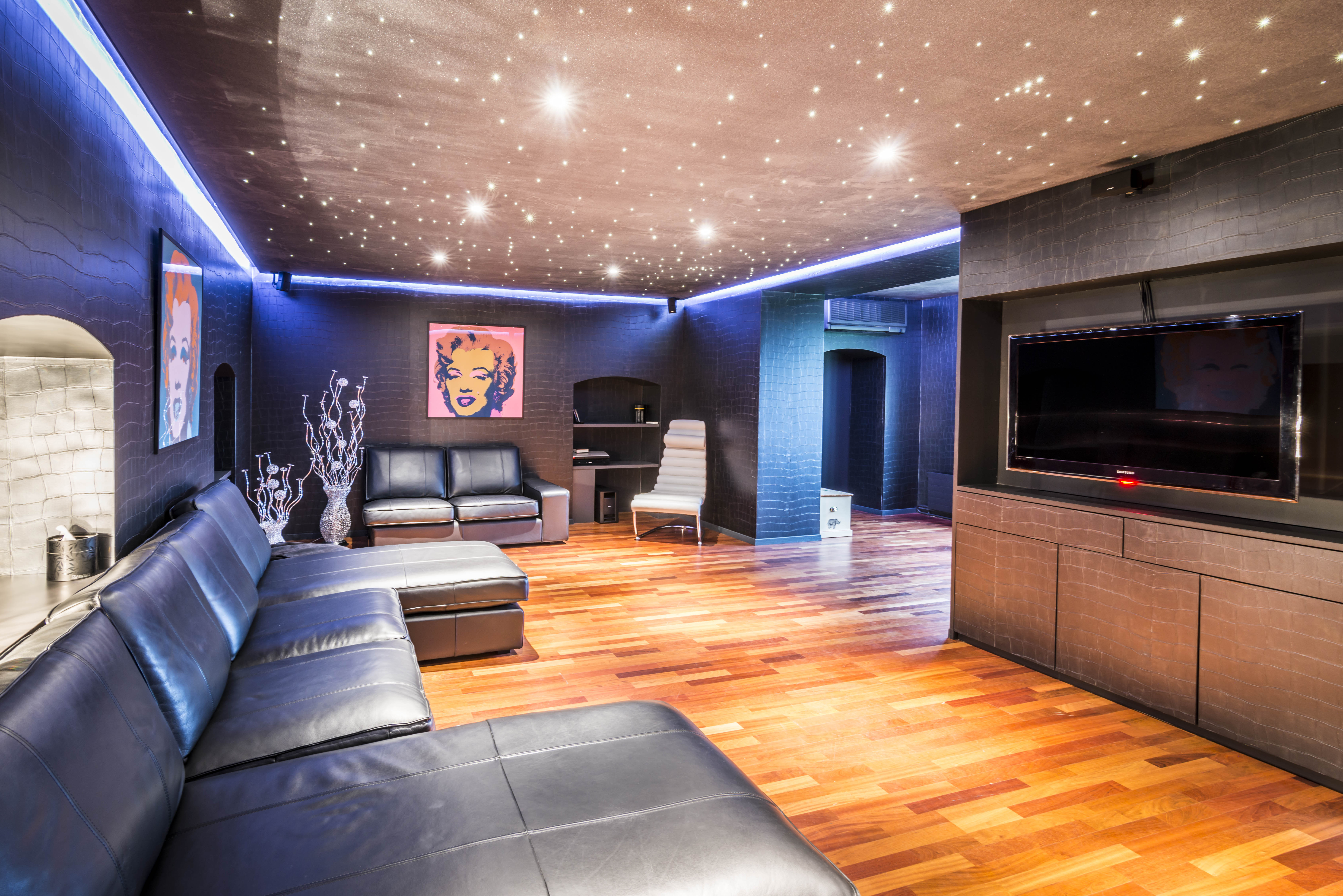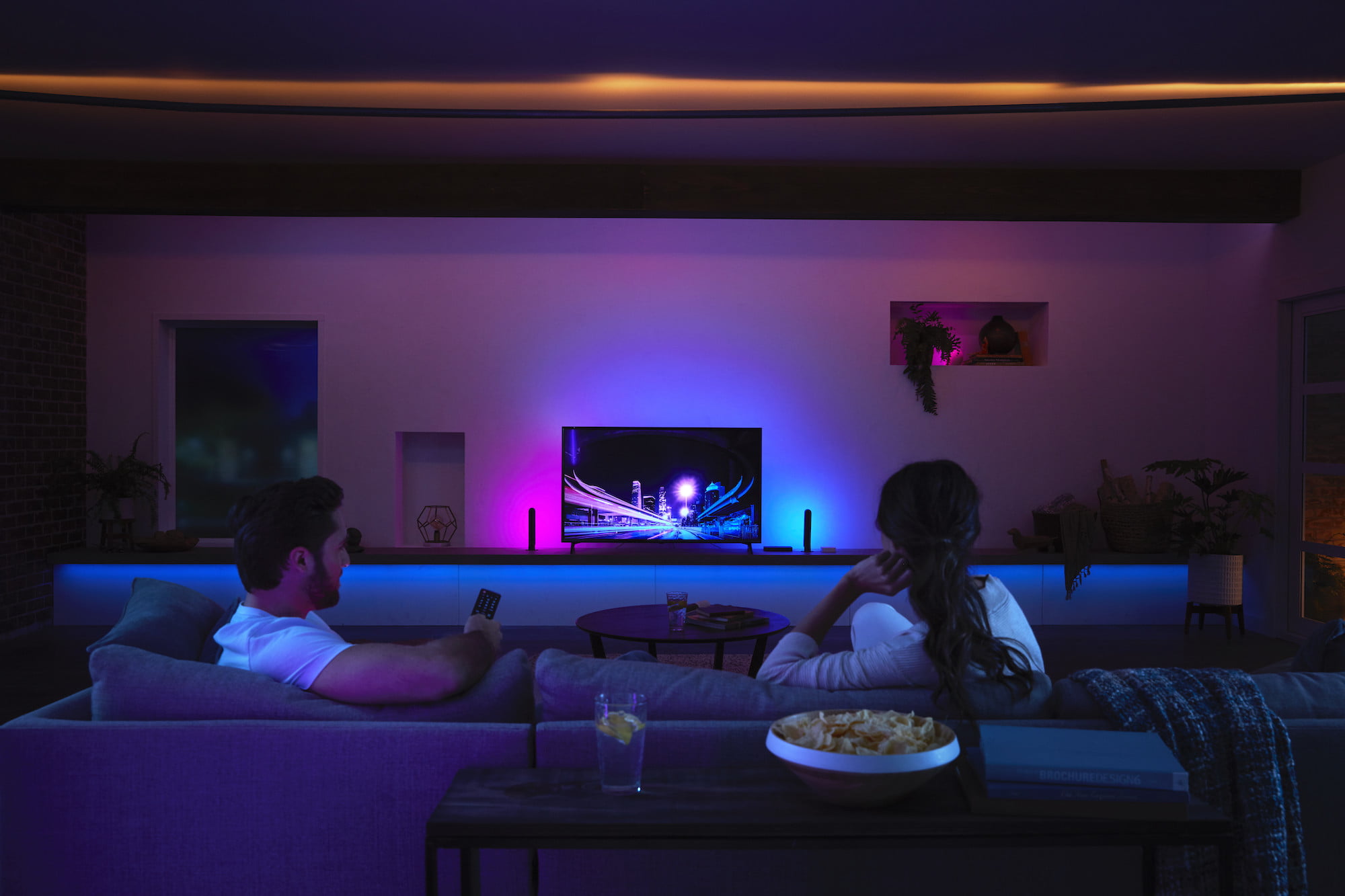
Here, ambient light is less of a concern.
#Media room lighting professional
What the home technology professional traditionally calls a media room is not necessarily optimized for the ultimate audio video experience, though it can be to an extent. For further reading on essential home theater ingredients, read the article 'Home Theater Design - 3 Essential Ingredients' by clicking here. The end result of a dedicated home theater space is an amazing, exacting experience designed purely for entertainment. Equipment is either displayed front and center in a home theater, or relegated to an equipment room or rack elsewhere in the home.įor all these reasons, a home theater is often retrofitted in an enclosed ‘bonus’-type space, such as a basement, a garage, or a spare bedroom, or designed into a floorplan in a home's early design stage. They are oftentimes built on risers to provide ideal viewing angles and unobstructed views from any seat in the room.
#Media room lighting movie
Theater seats are designed to be comfortable for long periods of time, like a binge-watching session or movie marathon. The following home theater installations are from HTA Certified home technology designers:

That is why dedicated home theaters exist! And the audio experience is one-of-a-kind and more immersive than can be obtained from a media room. After all, you would not put seven floorstanding speakers and massive subwoofers in a great room/kitchen area. Because the room is optimized for sound quality, surround sound is more palatable with speakers hidden behind acoustic treatments or displayed loud and proud without getting in the way of the room’s other functions. This means special sound isolation design, acoustic treatments, and special construction techniques (in practice it is like building a room within a room). Home theaters are designed to optimize sound quality inside the theater (and keep it from leaking out), while also keeping outside noise at bay.

Home theaters are usually acoustically-treated for sound control. Larger screens and video projectors are available to you because they perform well in light-controlled environments, and because homeowners are more apt to allow a large portion of their wall space to be taken up by a projection screen if it isn’t a multi-use space. The absence of unwanted light creates a better onscreen image.īecause you have the ability to completely control your environment in a dedicated theater space, you have more options when it comes to image size.
#Media room lighting windows
Many home theaters are designed without windows or have blackout shades to eradicate outside light sources. What is so unique about a dedicated home theater space? You need the ability to control (or completely eliminate) ambient light, for one. Other terms for a "home theater" are "home cinema" and "private home theater". This means a controlled environment that foments the best entertainment experience possible. The Home Technology Association (HTA) defines a home theater as a space that is optimized for a theatrical experience. This article will clearly answer the question of what the difference between a media room and home theater is and includes two photo slideshows with great examples of each. In other words, it’s good to know the difference between the two. For architects, interior designers, builders, lighting designers, and other contractors, however, these distinctions can be important in defining your vision and communicating with each other. You will hear them referring to their dedicated home theater space as a media room and vice versa.

Most homeowners do not know or even care about the difference.


 0 kommentar(er)
0 kommentar(er)
